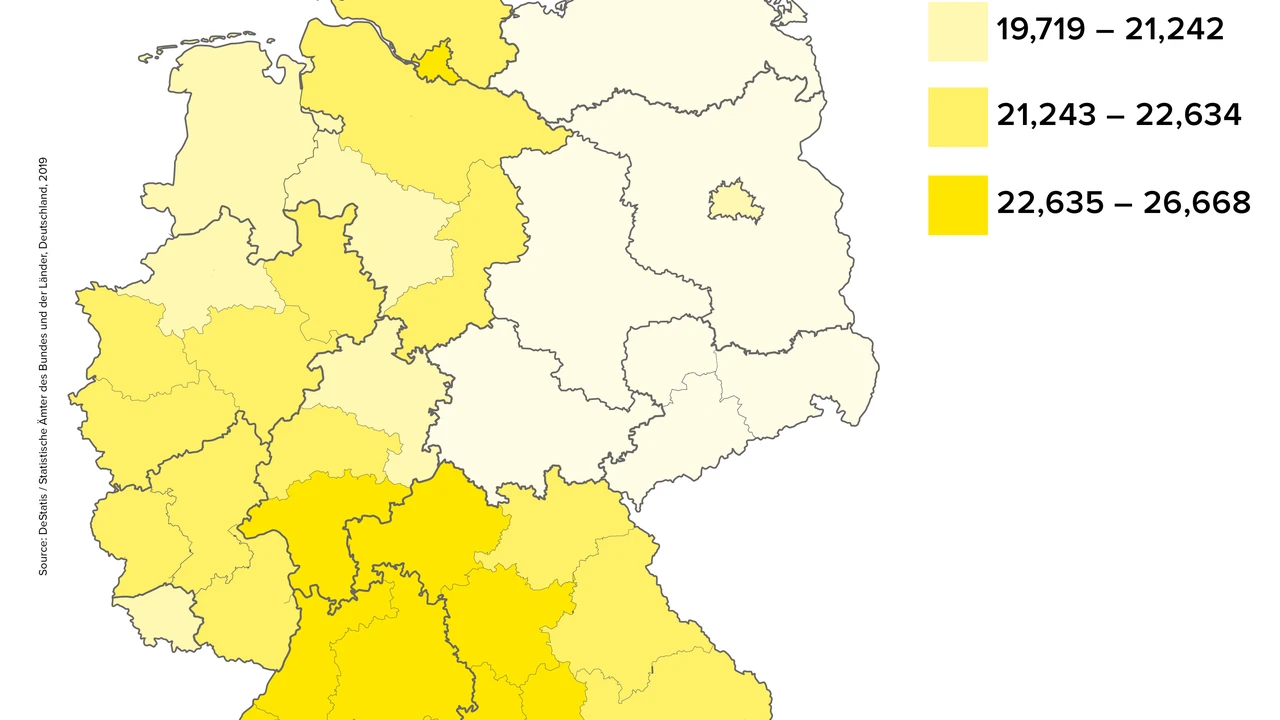Good Student Discounts: Rewarding Academic Excellence

Understanding Good Student Discounts for Teen Driver Insurance: The Basics
So, you've got a teenager eager to hit the road, and the insurance quotes are making your eyes water? Yeah, we've all been there. One of the easiest ways to knock down those sky-high premiums is by leveraging good student discounts. But what exactly *is* a good student discount, and how do you get one? Let's break it down. Basically, insurance companies believe that students who perform well in school are more responsible and less likely to take risks behind the wheel. Makes sense, right? They're disciplined, focused, and hopefully, paying attention in driver's ed. Therefore, they reward academic excellence with lower insurance rates. It's a win-win! Typically, this means maintaining a B average (or equivalent GPA), being in the top 20% of your class, or scoring above a certain threshold on standardized tests. The exact requirements vary from insurer to insurer, so it's crucial to do your homework. Think of it as a real-world reward for all that studying – and a serious incentive to keep those grades up!
Eligibility Requirements for Teen Driver Good Student Insurance Discounts: GPA, Test Scores & More
Alright, let's dive into the nitty-gritty of eligibility. The most common requirement is maintaining a B average, usually a 3.0 GPA or higher. Some insurers might even require a 3.5 or higher for the best discounts. Check with each company you're considering to see their specific GPA threshold. But it's not *just* about GPA. Some insurers also consider class rank. Being in the top 20% of your class can qualify you for a discount, even if your GPA is slightly below the 3.0 mark. And then there are standardized test scores. A high score on the SAT, ACT, or similar standardized test can also unlock savings. Again, the specific score requirements will vary. Keep in mind that these discounts usually apply until your teen turns 25, as long as they continue to meet the eligibility requirements. So, it's not just a one-time deal! And speaking of continuing eligibility, most insurers will require proof of continued academic performance. This might involve submitting report cards or transcripts each semester or year. Don't skip this step, or you risk losing the discount!
How to Apply for a Teen Driver Insurance Good Student Discount: Documentation and Verification
Okay, you've confirmed your teen is eligible – now what? Applying for the discount is usually a pretty straightforward process. First, gather your documentation. This typically includes a copy of your teen's report card or transcript, showing their GPA or class rank. If you're using standardized test scores, you'll need an official score report. Next, contact the insurance company you're interested in. You can usually apply for the discount when you're getting a quote or adding your teen to your existing policy. Let them know you're applying for a good student discount and provide the necessary documentation. They might have a specific form you need to fill out, so be sure to ask. The insurance company will then verify the information. They might contact the school directly to confirm your teen's GPA or class rank, or they might simply review the documents you provided. Be prepared to provide additional information if requested. Once everything is verified, the discount will be applied to your premium. It's that simple! Just remember to keep those grades up to maintain the discount year after year.
Maximizing Your Savings: Stacking Good Student Discounts with Other Teen Driver Insurance Discounts
Here's a pro tip: Good student discounts aren't the only way to save on teen driver insurance! You can often "stack" them with other discounts to maximize your savings. For example, many insurers offer discounts for completing a certified driver's education course. This shows that your teen has received professional training and is more likely to be a safe driver. Another common discount is for having safety features in your car, like anti-lock brakes, airbags, and electronic stability control. These features can help prevent accidents and reduce the severity of injuries. Some insurers also offer discounts for having multiple policies with them, like auto and home insurance. Bundling your policies can often result in significant savings. And don't forget about usage-based insurance programs, also known as telematics. These programs track your teen's driving habits using a mobile app or device installed in the car. If they drive safely, you can earn discounts based on their performance. The key is to ask your insurance agent about all the available discounts and see which ones you qualify for. Every little bit helps!
Beyond the Books: Other Factors Affecting Teen Driver Insurance Rates
While good student discounts are a fantastic way to lower your teen's insurance premiums, it's important to remember that they're not the only factor that insurance companies consider. Your teen's age and gender play a significant role. Younger drivers are statistically more likely to be involved in accidents, so they typically pay higher rates. Also, male drivers tend to pay more than female drivers, especially in the younger age groups. The type of car your teen drives also affects the insurance cost. Sports cars and other high-performance vehicles are generally more expensive to insure than family sedans or SUVs. The car's safety features, as mentioned earlier, can also impact the rate. Your teen's driving record is another crucial factor. Any tickets, accidents, or other violations will significantly increase the premium. And finally, your location plays a role. Insurance rates vary from state to state and even from city to city, depending on factors like traffic density, accident rates, and the cost of repairs. So, while a good student discount can help offset some of these costs, it's important to be aware of all the factors that contribute to your teen's insurance premium.
Real-World Examples: Success Stories of Teen Drivers Benefiting from Good Student Discounts
Let's talk about some success stories! I know a family, the Smiths, who were dreading adding their son, Alex, to their car insurance policy. They were expecting a huge increase in their premium. However, Alex was a straight-A student and qualified for a significant good student discount. This discount, combined with a driver's education discount, brought their premium down to a much more manageable level. Another example is Sarah, who was worried about the cost of insuring her daughter, Emily, who wanted to drive her own car to school. Emily worked hard to maintain a high GPA and was able to qualify for a good student discount, as well as a discount for having anti-lock brakes on her car. These discounts made it possible for Emily to have her own car without breaking the bank. These are just a few examples of how good student discounts can make a real difference in the cost of teen driver insurance. It's a tangible reward for hard work and academic achievement, and it can help families afford to provide their teens with the freedom and independence of driving.
The Future of Teen Driver Insurance: Trends and Predictions
What does the future hold for teen driver insurance? Well, several trends are shaping the landscape. Telematics, as mentioned earlier, is becoming increasingly popular. More and more insurers are offering usage-based insurance programs that reward safe driving habits. This trend is likely to continue as technology advances and becomes more integrated into our cars. Another trend is the increasing use of data analytics. Insurance companies are using data to better assess risk and personalize premiums. This means that factors beyond age and gender, like driving habits and even personality traits, could play a role in determining insurance rates in the future. Autonomous driving technology is also on the horizon. As self-driving cars become more common, the role of the driver will change, and insurance policies will need to adapt. It's possible that liability will shift from the driver to the manufacturer or the software provider. Finally, there's a growing focus on distracted driving. Insurers are working to raise awareness about the dangers of texting and driving and are developing new technologies to prevent distracted driving. The future of teen driver insurance is dynamic and constantly evolving. Staying informed about these trends can help you make smart decisions and save money.
Specific Product Recommendations: Telematic Devices and Safe Driving Apps for Teen Drivers
Alright, let's get down to brass tacks and talk about some specific products that can help you monitor your teen's driving and potentially lower your insurance rates. We're focusing on telematics devices and safe driving apps. Remember to always check with your insurance provider to see which devices or apps they specifically approve for discount eligibility.
Hum by Verizon: Comprehensive Vehicle Monitoring and Safety
What it is: Hum by Verizon is a comprehensive vehicle monitoring system that includes a small device that plugs into your car's OBD-II port (usually located under the dashboard). It offers a range of features designed to enhance safety and provide peace of mind.
Key Features:
- GPS Tracking: Know where your teen is at all times.
- Crash Detection and Emergency Assistance: Automatically alerts emergency services in the event of a crash.
- Vehicle Diagnostics: Monitors your car's health and alerts you to potential problems.
- Speed Alerts: Notifies you if your teen exceeds a pre-set speed limit.
- Boundary Alerts: Alerts you if your teen drives outside a designated area.
- Driving History: Provides detailed reports on your teen's driving habits, including speed, braking, and acceleration.
Usage Scenario: Imagine your teen is going to a friend's house across town. With Hum, you can track their route, receive alerts if they speed, and be notified if they leave the designated area. If they get into an accident, Hum will automatically contact emergency services and provide them with the vehicle's location.
Pros: Comprehensive features, reliable crash detection, easy to install.
Cons: Requires a monthly subscription, can be a bit pricey compared to some other options.
Price: Approximately $10-15 per month, plus the cost of the device (usually around $80).
Automatic Pro: Advanced Vehicle Tracking and App Integration
What it is: Automatic Pro is another OBD-II device that tracks your driving habits and provides insights into your car's performance. It's known for its seamless integration with other apps and services.
Key Features:
- Trip Tracking: Automatically logs all your trips, including distance, duration, and fuel efficiency.
- Crash Alert: Detects crashes and automatically notifies emergency services.
- Engine Diagnostics: Provides information about your car's engine health and potential problems.
- IFTTT Integration: Connects to other apps and services using IFTTT (If This Then That), allowing you to create custom automations.
- Parking Location: Automatically saves your parking location so you can easily find your car.
Usage Scenario: Let's say your teen is a bit forgetful. Automatic Pro can automatically save their parking location so they can easily find their car in a crowded parking lot. It can also send you a notification if your teen is driving erratically or if their car needs maintenance.
Pros: Excellent app integration, accurate trip tracking, user-friendly interface.
Cons: Can be a bit more expensive than some other OBD-II devices, requires a subscription for some features.
Price: Around $130 for the device, plus a monthly subscription for certain advanced features.
DriveSafe.ly: Hands-Free Texting and Driving Prevention
What it is: DriveSafe.ly is a mobile app that reads your text messages aloud and allows you to respond using voice commands. It's designed to prevent distracted driving by keeping your eyes on the road and your hands on the wheel.
Key Features:
- Text-to-Speech: Reads incoming text messages aloud.
- Voice-to-Text: Allows you to respond to text messages using voice commands.
- Automatic Activation: Automatically activates when you start driving.
- Customizable Settings: Allows you to customize the app's settings to your preferences.
Usage Scenario: Imagine your teen is driving home from school and receives a text message from a friend. DriveSafe.ly will automatically read the message aloud, allowing your teen to stay focused on the road. They can then respond using voice commands, without ever taking their hands off the wheel or their eyes off the road.
Pros: Effective at preventing distracted driving, easy to use, affordable.
Cons: Can be a bit annoying to listen to text messages being read aloud, voice recognition may not always be perfect.
Price: Free version available, paid version with more features costs around $20 per year.
Life360: Family Safety and Location Sharing
What it is: Life360 is a family safety app that allows you to track the location of your family members, receive alerts when they arrive at or leave designated locations, and communicate with them easily.
Key Features:
- Location Sharing: See the real-time location of your family members on a map.
- Place Alerts: Receive alerts when your family members arrive at or leave designated locations (e.g., school, home, work).
- Crash Detection: Detects crashes and automatically notifies emergency services.
- SOS Alerts: Allows family members to send SOS alerts to each other in case of an emergency.
- Driving Reports: Provides insights into your family members' driving habits, including speed, braking, and acceleration.
Usage Scenario: Let's say your teen is going to a party. With Life360, you can track their location to make sure they're safe, receive alerts when they arrive at the party and when they leave, and even get notified if they're driving too fast.
Pros: Comprehensive family safety features, accurate location tracking, user-friendly interface.
Cons: Requires all family members to install the app, can be a bit intrusive for some teens.
Price: Free version available, paid version with more features costs around $5-10 per month.
Comparison Table: Telematics Devices and Safe Driving Apps
| Product | Key Features | Pros | Cons | Price |
|---|---|---|---|---|
| Hum by Verizon | GPS tracking, crash detection, vehicle diagnostics, speed alerts, boundary alerts, driving history | Comprehensive features, reliable crash detection, easy to install | Requires a monthly subscription, can be pricey | $10-15/month + $80 device |
| Automatic Pro | Trip tracking, crash alert, engine diagnostics, IFTTT integration, parking location | Excellent app integration, accurate trip tracking, user-friendly interface | Requires subscription for some features, can be expensive | $130 device + subscription |
| DriveSafe.ly | Text-to-speech, voice-to-text, automatic activation, customizable settings | Effective at preventing distracted driving, easy to use, affordable | Annoying text-to-speech, voice recognition imperfect | Free/$20 per year |
| Life360 | Location sharing, place alerts, crash detection, SOS alerts, driving reports | Comprehensive family safety features, accurate location tracking, user-friendly interface | Requires all family members to install, can be intrusive | Free/$5-10 per month |
Disclaimer: Prices and features may vary. Always check with the manufacturer or retailer for the most up-to-date information. Also, confirm with your insurance provider which devices and apps qualify for discounts.
Choosing the Right Option: Factors to Consider When Selecting a Telematics Device or Safe Driving App
So, how do you choose the right telematics device or safe driving app for your teen? Here are some factors to consider:
- Your Budget: Telematics devices and safe driving apps range in price from free to several hundred dollars. Consider your budget and choose an option that you can afford.
- Your Needs: What features are most important to you? Do you need GPS tracking, crash detection, or just a simple way to prevent distracted driving? Choose an option that meets your specific needs.
- Your Teen's Privacy: Some teens may be resistant to the idea of being tracked. Talk to your teen about the benefits of telematics devices and safe driving apps and address any concerns they may have.
- Insurance Compatibility: Not all telematics devices and safe driving apps are compatible with all insurance companies. Check with your insurance provider to see which options qualify for discounts.
- Ease of Use: Choose a device or app that is easy to use and understand. A complicated interface can be frustrating for both you and your teen.
By considering these factors, you can choose a telematics device or safe driving app that will help you keep your teen safe on the road and potentially lower your insurance rates. Remember, safety is always the top priority!
:max_bytes(150000):strip_icc()/277019-baked-pork-chops-with-cream-of-mushroom-soup-DDMFS-beauty-4x3-BG-7505-5762b731cf30447d9cbbbbbf387beafa.jpg)






